Monday morning, you open your computer and are delivered a few Slack messages about a marketing campaign you might launch on Tuesday.
After answering these questions, you look at your inbox and find that you’ve been tagged in some slides for that exact same marketing and advertising campaign.
Once you’re done responding, you connect to Zoom to talk to stakeholders about any last-minute tasks that need to be completed to free you up. Some of the stakeholders would like you to send a follow-up email from the meeting so they can do that.
Alternatively, others may tag them in the appropriate Google Docs, so you can do the same.
Suddenly it’s 1:00 PM, and you haven’t accomplished the substantial remainder of your to-do list to get this challenge presented. The entire day has been a flurry of jumping in and out of slightly more messaging apps, slide decks, and Zoom calls, just trying to get everyone on the same page.
Does this sound familiar?
I spoke with Jake Cerf, head of business advocacy and marketing at Asana, to get the lowdown on the most challenging productivity scenarios most teams will face in 2024, and how best to seamlessly manage them.
What Teams Get Wrong When It Comes to Productivity
Jake empathizes with the chaos that can occur when you don’t focus on enjoyable processes for team-wide productivity.
“It would get chaotic,” he urged, along with, “Before I joined Asana, I thought again about how I spent my time coordinating with people, and it was a huge amount. We could be on emails, Slack, Google Docs, and Slides. And also you never really knew who was doing what, and when, and it was too easy to lose sight of the goal we were all trying to achieve.”
Which sounds painfully understandable. Fortunately, it has some proven guidelines for cleaning up your staff processes and developing additional scalable alternatives to strengthen cross-functional collaboration.
1. Every staff manager will need to know how their artistic work connects to the company’s goals – very often they will need to make this clear in their workflows.
People always want to know how their artwork connects to larger strategic initiatives. They really want to feel recognized, appreciated, and know they are making an impact. Such a large amount of projects from a pioneer are ready to ensure that people are working with the right priorities and aligning on goals that change the needle.
That’s what makes a product like Asana so crucial. Jake has a very simple job to make sure he doesn’t micromanage his staff on specific tasks, and that’s because in Asana he can see how each subtask his staff is responsible for ties into the company’s key 2024 goals.
Additionally, to untangle conflicting interdepartmental goals, it can be helpful to use a centralized productivity tool that highlights business priorities from top to bottom.
“As a trailblazer, such a big part of our project is making sure people are working on the right types of problems, helping to unlock individual staff members and allowing them to have a Northern celebrity. It’s really good for productivity because when people actually feel like they’re working on those types of problems, they do better artistic work,” Jake says.
He adds: “You don’t want to get so hung up on the details. You’ll tell individual staff members the what and why, and they may be able to decide the rest. Alternatively, being clear about the overall symbolic goals unlocks productivity up, down and across the staff.”
If you’re struggling with productivity issues, start by making sure every single leader is aligned with the company’s top 2024 goals, then project them by demonstrating how all their staff’s projects feed into that final role. If a role isn’t compatible, it’s time to imagine refocusing on the movements that are.
2. Give your AI a “place” to increase your staff’s productivity.
Artificial intelligence has also been a hot topic in the last couple of years; on the other hand, people are still skeptical about the improvements it could bring to their daily lives.
In fact, 62% of marketers globally believe that more people should use some AI in their roles. For Jake, AI has proven to be much more useful as teammate rather than just a tool.
“My life changed dramatically when I stopped prompting AI with generic requests like: ‘Please write this blog send‘, and instead I focused on who I wanted the AI to be: ‘Please write this blog post as if you were a technical writer at a large SaaS company.‘”
Jake strongly recommends assigning a “place” to AI when leveraging AI for productivity.
“When teams work on the most important initiative, and you also give each individual AI bot its own explicit private post, the output is much higher. Imagine writing a blog post: you could assign the AI the role of editor, fact-checker, or content subject strategist.”
“Or,” he adds, “if you happen to use a tool like Asana, you’ll have access to AI, which is one of the world’s greatest challenge managers. That means you can unblock issues and triage requests and make sure people are working on the right types of issues.”
Ideally, the productivity tools you leverage already have AI purposes built in. If not, consider which plugins or external tools are worth using to increase efficiency.
3. Leverage AI to reduce unnecessary work.
The antithesis of productivity is useless work.
If your staff is bogged down in menial tasks, they almost certainly don’t have the capacity or time to be aware of the huge symbolic goals that represent much of your staff’s impact.
This could be a huge obstacle, which could be solved with artificial intelligence.
Jake gives the example of reusing content material as a way to increase productivity. He says, “With AI, you’ll be able to do a keynote presentation and have AI write a blog post about the keynote presentation. Or, you’ll be able to take your keynote script and have AI design the presentation itself.”
He continues: “Finding new ways to increase the longevity and impact of content is one of the best possible ways to use AI.”
Additionally, Jake encourages marketers to leverage AI for content creation, along with other creative outputs like manager reviews, sending feedback to colleagues, testing ideas, collaborating on scenarios, and more.
4. Have a centralized workspace where teams can work cross-functionally.
After all, none of this is possible without laying a solid foundation for scalable and enjoyable cross-functional collaboration in an environment.
Believe those slide decks, Google Docs, Slack messages, and emails I mentioned earlier? Why not try putting more of your artwork in one centralized place?
“Productivity is all about visibility,” Jake says. “Your staff will have to pull in the same direction. Having a tool like Asana has been really helpful for our staff productivity—you want to have a place where you can set your goals and then put all of the staff’s art into action and hold others accountable.”
“Also,” he adds, “it’s critical to use the same centralized workspace if you’re in ambient mode, so you have alignment on tasks and initiatives that help you achieve your goals.”
Simply put, jumping between 30 different messaging and content creation apps and power is not conducive to long-term productivity. As a pacemaker, it’s your job to figure out simple ways to centralize as much as possible in one place, and then use AI to supercharge it all.
To learn more about how HubSpot and Asana help marketers increase productivity, check out the newly available HubSpot and Asana integration.
![]()
[ continue ]
wordpress Maintenance Plans | wordpress hosting
Learn more









